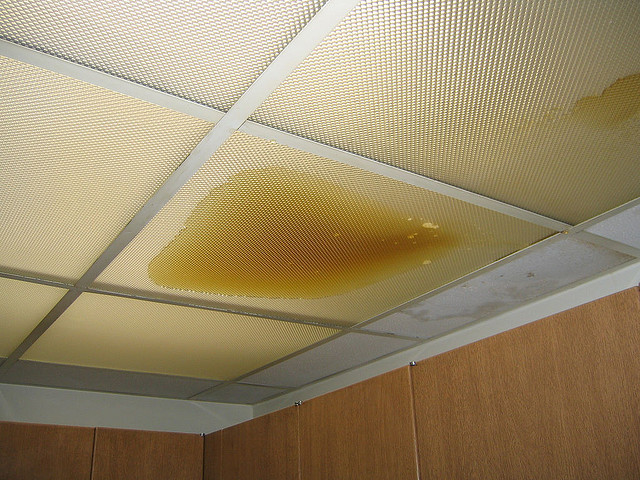Overview To Water Leak Detection At Home
Overview To Water Leak Detection At Home
Blog Article
This article in the next paragraphs on the subject of Locating water leaks is seriously motivating. Read it for yourself and decide what you think about it.

Early discovery of dripping water lines can mitigate a potential calamity. Some tiny water leaks may not be visible.
1. Take A Look At the Water Meter
Every residence has a water meter. Examining it is a surefire way that helps you find leaks. For starters, shut off all the water sources. Make sure nobody will certainly purge, make use of the tap, shower, run the cleaning equipment or dishwasher. From there, go to the meter and watch if it will certainly alter. Considering that no person is utilizing it, there need to be no activities. If it relocates, that shows a fast-moving leakage. If you identify no adjustments, wait a hr or 2 as well as inspect back again. This means you might have a sluggish leak that could also be below ground.
2. Check Water Intake
If you find abrupt modifications, in spite of your consumption being the very same, it implies that you have leakages in your plumbing system. A sudden spike in your costs suggests a fast-moving leak.
A stable boost every month, even with the exact same behaviors, shows you have a sluggish leakage that's also slowly rising. Call a plumber to thoroughly inspect your residential or commercial property, specifically if you really feel a warm area on your flooring with piping below.
3. Do a Food Coloring Test
30% comes from bathrooms when it comes to water intake. Examination to see if they are running correctly. Decrease flecks of food shade in the storage tank as well as wait 10 minutes. If the color in some way infiltrates your dish throughout that time without flushing, there's a leakage in between the tank as well as bowl.
4. Asses Exterior Lines
Don't forget to inspect your outside water lines too. Test spigots by affixing a yard hose. Should water seep out of the connection, you have a loosened rubber gasket. Change this as well as make sure all links are limited. If you've got a sprinkler system, it will help get it expertly analyzed as well as maintained annually. One tiny leak can throw away lots of water as well as spike your water bill.
5. Evaluate as well as Evaluate the Circumstance
Property owners should make it a behavior to inspect under the sink counters and also inside cabinets for any kind of bad odor or mold development. These two warnings indicate a leakage so timely attention is needed. Doing routine assessments, even bi-annually, can conserve you from a major trouble.
Check for stainings as well as compromising as most devices and pipelines have a life span. If you believe leaking water lines in your plumbing system, don't wait for it to rise.
Early discovery of dripping water lines can mitigate a prospective catastrophe. Some small water leakages might not be noticeable. Checking it is a guaranteed means that helps you discover leaks. One little leakage can lose tons of water and surge your water bill.
If you think leaking water lines in your plumbing system, don't wait for it to escalate.
WARNING SIGNS OF WATER LEAKAGE BEHIND THE WALL
PERSISTENT MUSTY ODORS
As water slowly drips from a leaky pipe inside the wall, flooring and sheetrock stay damp and develop an odor similar to wet cardboard. It generates a musty smell that can help you find hidden leaks.
MOLD IN UNUSUAL AREAS
Mold usually grows in wet areas like kitchens, baths and laundry rooms. If you spot the stuff on walls or baseboards in other rooms of the house, it’s a good indicator of undetected water leaks.
STAINS THAT GROW
When mold thrives around a leaky pipe, it sometimes takes hold on the inside surface of the affected wall. A growing stain on otherwise clean sheetrock is often your sign of a hidden plumbing problem.
PEELING OR BUBBLING WALLPAPER / PAINT
This clue is easy to miss in rooms that don’t get much use. When you see wallpaper separating along seams or paint bubbling or flaking off the wall, blame sheetrock that stays wet because of an undetected leak.
BUCKLED CEILINGS AND STAINED FLOORS
If ceilings or floors in bathrooms, kitchens or laundry areas develop structural problems, don’t rule out constant damp inside the walls. Wet sheetrock can affect adjacent framing, flooring and ceilings.
https://www.servicemasterbyzaba.com/blog/how-to-detect-water-leakage-in-walls/

As a devoted reader on Hacks to detect leaks, I think sharing that blog post was really useful. For those who enjoyed reading our article if you please be sure to share it. Thanks a lot for going through it.
Report this page